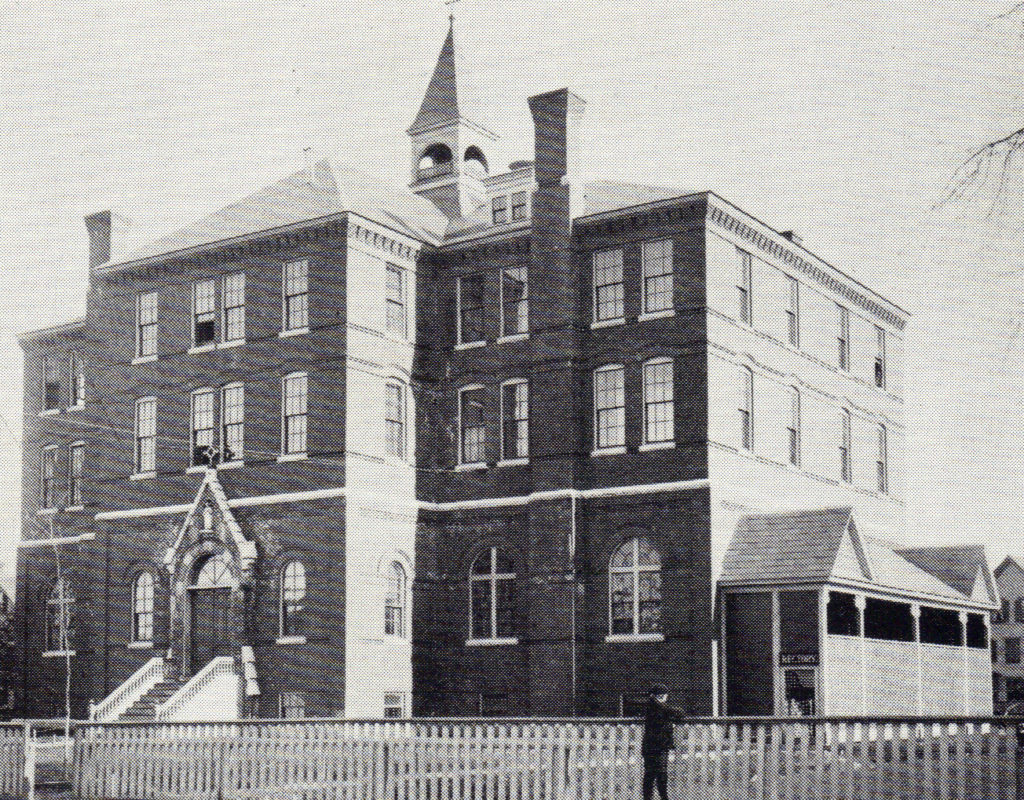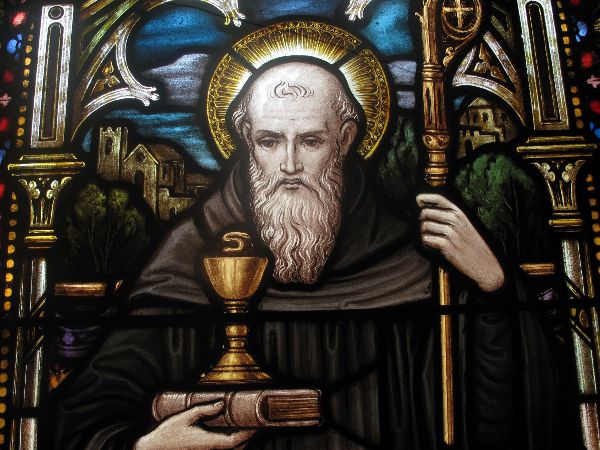History
Our History and Patron
In 1888, the bishop presented the monks of Saint Anselm Abbey with the task of building a parish in the heart of the German and French sector of Manchester. Father Sylvester Yoerg, O.S.B., organized St. Raphael’s Parish and planned for a school to occupy the second and third floors over the new church.
The next year, as the monks prepared to open Saint Anselm College, they simultaneously prepared to open an elementary school at their new parish. The school, completed in 1889, was under the direction of the Benedictine Sisters from Elizabeth, New Jersey. The four sisters lived in a house opposite the church and school on Fourth Street. Thus, as a means of putting religion into education, St. Raphael’s School opened with 124 students. Graduation for the first class of 4 students was held in 1891. In 1926, the Sisters of Mercy gradually took over the teaching duties at the school. By 1928, all of the Benedictine Sisters had returned to the Motherhouse in New Jersey, leaving behind many fond memories.
To meet the growing needs of the parish in the early 1960’s, a new church and modern school were built. It was with great pride that, in 1965, the first class graduated from this new 8-classroom school complete with a library and cafeteria and a gymnasium where the old church had been.
In 1978, as a result of the consolidation of the Catholic School System throughout the city, St. Raphael’s School became the West Side Catholic Regional School – South Campus. It housed grades K-6 for the West Side parochial school children. Grades 7 and 8 were held at West Side Catholic Regional School – North Campus, formerly Ste. Marie School.
Due to demographic changes in the early 1990’s, the Diocese closed the North Campus at Ste. Marie’s, and that change left one Catholic school opened on the West Side – known as West Side Catholic School.
In September of 2003, at the request of the Diocesan Superintendent of Catholic Schools, Father Denis Audet, West Side Catholic was renamed Saint Benedict Academy. The school continues to provide a nurturing co-educational environment for elementary students in Grades K-6, offering excellent academics, Catholic faith development, and life-long skills.
Today, Saint Benedict Academy is a vibrant, private Catholic school of the 21st Century. Saint Benedict prides itself on enriching students and families with a strong academic education rooted in the richness of the Catholic faith and traditions. We are a lively and engaging academic institution with a strong sense of our Catholic identity and our role in building future leaders for the Church and our world.

Our Patron
Saint Benedict, the father of western Christian monasticism, was born in Umbria, Italy, about 480 A.D. He studied in Rome, but fled the moral dangers of the city. He founded a monastery near Subiaco, now Sacro Speca, and developed his “Holy Rule,” which became the norm of all Western monks.
He developed his Holy Rule so that laypeople (not clergymen), could live as fully as possible the kind of life presented in the Gospels. He said, “My words are addressed to thee, whoever thou art, that, renouncing thine own will, dost put on the strong and bright armour of obedience in order to fight for the Lord Christ, our true King.”
In Benedict’s view of the Christian character, prayer permeated every part of life. Public prayer would bring the community closer to God. He said about private prayer, “”If anyone wishes to pray in private, let him go quietly into the oratory and pray, not with a loud voice, but with tears and fervour of heart”
He believed that idleness inevitably led to ruin, and that disciplined work was the remedy to turn “back to God by the labour of obedience, from whom they had departed by the idleness of disobedience”. Additionally, Christian life was fundamentally social–Benedictine households are where people live, work, eat and pray together. Benedictine monks would not take vows of poverty, but were expected to live only with what was necessary. Benedictine monasteries gave alms, with the goals to help the poor, clothe the naked, visit the sick, bury the dead, and aid the afflicted.
As the cross of Jesus Christ was the chief object of elevation among the first Christians, so it was also for St. Benedict. Hence, he is represented bearing the Cross of Christ and the Holy Rule. St. Benedict died in 547. His sister, St. Scholastica, founded the women’s order of Benedictines
According to the Catholic Encyclopedia, today “we find the Benedictines teaching in poor schools and in the universities, practising the arts and following agriculture, undertaking the care of souls, or devoting themselves wholly to study. No work is foreign to the Benedictine, provided only it is compatible with living in community and with the performance of the Divine Office.”
Pope Benedict XVI has said of Saint Benedict: “With his life and work, Saint Benedict exercised a fundamental influence on the development of European civilization and culture” and helped Europe to emerge from the “dark night of history” that followed the fall of the Roman Empire.
Saint Benedict Academy lives our Patron’s ideals of community, work, and dedication to God within our nurturing Catholic household.

